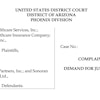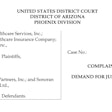
The rate of malpractice claims paid against U.S. physicians has dropped across all medical specialties over the past 20 years, according to an article in JAMA Internal Medicine. Radiologists have also benefited from the trend, although to a lesser extent than other disciplines.
There was a 55.7% decline in the rate of malpractice claims paid on behalf of U.S. physicians from 1992 to 2014, according to a research team led by Dr. Adam Schaffer of Brigham and Women's Hospital and Harvard Medical School in Boston. The rate of claims against radiologists fell 38.6% during this period, one of the smallest declines among the 25 medical specialties surveyed (JAMA Intern Med, March 27, 2017).
Various efforts have been made over the past several decades to improve patient safety, such as through checklists and patient handoff protocols, as well as to reduce physician exposure to legal liability, such as through tort reform and damage caps, the authors noted. In addition, new tools have been developed to track claims against physicians more closely, such as the National Practitioner Data Bank (NPDB), created in 1986.
The researchers decided to analyze malpractice claims in the NPDB from 1992 to 2014 by physician specialty to fill what they described as a gap in knowledge of how trends in malpractice payments and liability risk are affecting different physicians. They analyzed the data by a number of factors, including annual rate of paid claims per physician specialty, mean dollar amount of claims, and frequency of "catastrophic" payments, defined as those over $1 million. Data were reported in four-year periods to reduce the impact of annual variations.
They found that across the 25 medical specialties included in the survey, the rate of paid malpractice claims in the 1992-1996 period was 20.1 claims per 1,000 physicians, compared with a rate of 8.9 claims per 1,000 physicians in the 2009-2014 period, a percentage decline of 55.7%. The decline varied across the 25 specialties included in the study, with some of the major medical disciplines reported below.
| Declines in malpractice claim rates by physician specialty | |||
| Claim rates per 1,000 physicians | |||
| 1992-1996 | 2009-2014 | Change | |
| All physicians | 20.1 | 8.9 | -55.7% |
| Orthopedics | 56.5 | 25.0 | -55.8% |
| Ob/gyn | 57.6 | 25.9 | -55.0% |
| Emergency medicine | 24.3 | 13.0 | -46.5% |
| Anesthesiology | 15.4 | 8.6 | -44.2% |
| Neurosurgery | 66.0 | 37.3 | -43.5% |
| Radiology | 22.3 | 13.7 | -38.6% |
| Cardiology | 15.6 | 13.5 | -13.5% |
The decline in the claim rate for radiologists was 38.6%, with only four other specialties -- cardiology, colon and rectal surgery, gastroenterology, and general surgery -- showing smaller declines. Radiologists also were slightly higher than average when it came to the rate of claims filed against the specialty, with a rate of 18.9 claims per 1,000 specialists over all 22 years of the study, compared with a rate of 14.1 claims per 1,000 physicians across all specialties and survey periods.
Radiology was one of two specialties -- the other being pathology -- in which diagnostic errors were alleged as the reason for paid claims, with 83.9% of claims in radiology and 87.0% of claims in pathology being attributed to diagnostic errors. The authors attributed these rates to the fact that radiology and pathology are focused on the diagnostic process.
Schaffer and colleagues gave a number of reasons for why the malpractice claim rate has dropped:
- The passage of tort reforms such as damage caps and statutes of limitations
- Improvements in patient safety, such as checklists and patient handoff protocols
- Changes in the way healthcare institutions and insurers are resolving claims, with more claims being settled on behalf of institutions alone -- meaning they don't get reported to the NPDB
- The growing prevalence of "communication and resolution" programs, in which compensation for an injury could be provided without a written claim being filed by a patient
Despite the decline in the rate of claims being filed, the mean payment amount increased by 23.3% across all specialties (after adjustment to 2014 dollars). The authors postulated that this could be due to plaintiffs' attorneys not taking cases with smaller potential payments because of administrative costs or the risk of losing a case.
The group concluded that the findings could help guide decisions about methods needed to improve patient safety and reduce physician liability.
"For example, a multifaceted patient safety program within obstetrics was developed by targeting high-risk liability areas and significantly reduced malpractice claims and the amount paid on claims," the authors wrote. "Many aspects of this program ... can and have been applied to other specialties."



















